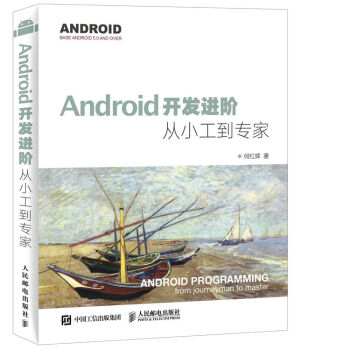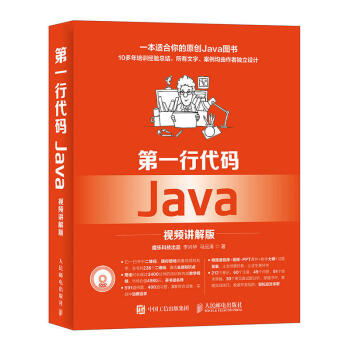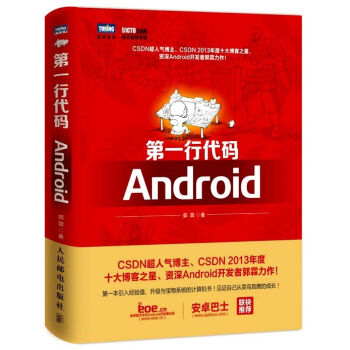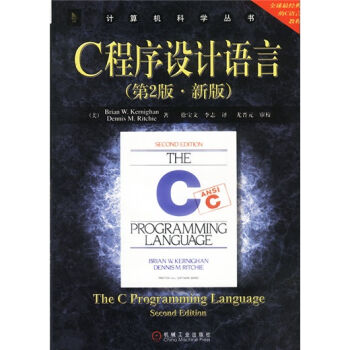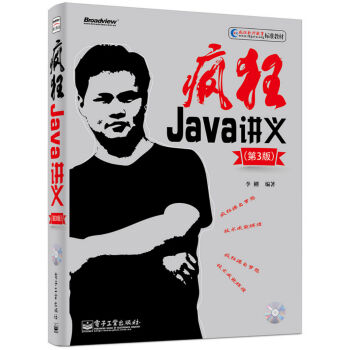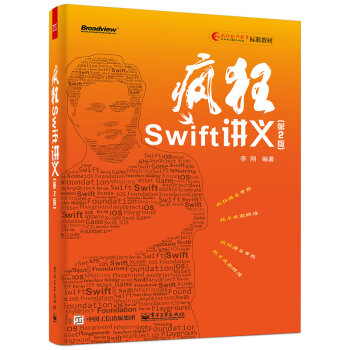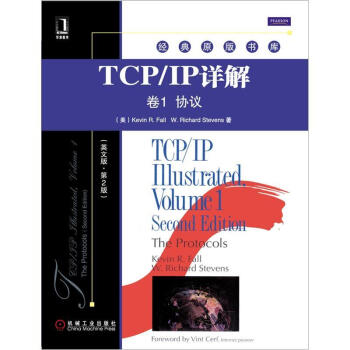

齣版社: 機械工業齣版社
ISBN:9787111382287
版次:2
商品編碼:10995850
品牌:機工齣版
包裝:平裝
開本:16開
齣版時間:2012-05-01
用紙:膠版紙
頁數:1047
具體描述
編輯推薦
內容簡介
《TCP/IP詳解》是已故網絡專傢、著名技術作傢W. Richard Stevens的傳世之作,內容詳盡且極具專業,被譽為TCP/IP領域的不朽名著。《TCP/IP詳解·捲1:協議(英文版第2版)》是《TCP/IP詳解》的第1捲,主要講述TCP/IP協議,結閤大量實例講述TCP/IP協議族的定義原因,以及在各種不同的操作係統中的應用及工作方式。第2版在保留Stevens卓越的知識體係和寫作風格的基礎上,新加入的作者Kevin R. Fall結閤其作為TCP/IP協議研究領域領導者的尖端經驗來更新本書,反映瞭全新的協議和很好的實踐方法。首先,他介紹瞭TCP/IP的核心目標和體係結構概念,展示瞭它們如何能連接不同的網絡和支持多個服務同時運行。接著,他詳細解釋瞭IPv4和IPv6網絡中的互聯網地址。然後,他采用自底嚮上的方式來介紹TCP/IP的結構和功能:從鏈路層協議(如Ethernet和Wi-Fi),經網絡層、傳輸層到應用層。
書中依次全麵介紹瞭ARP、DHCP、NAT、防火牆、ICMPv4/ICMPv6、廣播、多播、UDP、DNS等,並詳細介紹瞭可靠傳輸和TCP,包括連接管理、超時、重傳、交互式數據流和擁塞控製。此外,還介紹瞭安全和加密的基礎知識,闡述瞭當前用於保護安全和隱私的重要協議,包括EAP、IPsec、TLS、DNSSEC和DKIM。
本書適閤任何希望理解TCP/IP協議如何實現的人閱讀,更是TCP/IP領域研究人員和開發人員的專業參考書。無論你是初學者還是功底深厚的網絡領域高手,本書都是案頭必備,將幫助你更深入和直觀地理解整個協議族,構建更好的應用和運行更可靠、更高效的網絡。
本書特色:
·W. Richard Stevens傳奇般的TCP/IP指南,現在被頂端網絡專傢Kevin R. Fall更新,反映瞭新一代的基於TCP/IP的網絡技術。
·展示每種協議的實際工作原理,並解釋其來龍去脈。
·新增加的內容包括RPC、訪問控製、身份認證、隱私保護、NFS、SMB/CIFS、DHCP、NAT、防火牆、電子郵件、Web、Web服務、無綫、無綫安全等。
作者簡介
Kevin R. Fall博士有超過25年的TCP/IP工作經驗,並且是互聯網架構委員會成員。他是互聯網研究任務組中延遲容忍網絡研究組(DTNRG)的聯席主席,該組緻力於在極端和挑戰性能的環境中探索網絡。他是一位IEEE院士。W. Richard Stevens博士(1951—1999)是國際知名的Unix和網絡專傢,受人尊敬的技術作傢和谘詢顧問。他教會瞭一代網絡專業人員使用TCP/IP的技能,使互聯網成為人們日常生活的中心。Stevens於1999年9月1日去世,年僅48歲。在短暫但精彩的人生中,他著有多部經典的傳世之作,包括《TCP/IP 詳解》(三捲本)、《UNIX網絡編程》(兩捲本)以及《UNIX環境高級編程》。2000年他被國際專業機構Usenix追授“終身成就奬”。
精彩書評
“我認為本書之所以領先群倫、,是源於其對細節的注重和對曆史的關注。書中介紹瞭計算機網絡的背景知識,並提供瞭解決不斷演變的網絡問題的各種方法。本書一直在不懈努力以獲得精確的答案和探索剩餘的問題域。對於緻力於完善和保護互聯網運營或探究解決長期存在問題的可選方案的工程師,本書提供的見解將是無價的。作者對當今互聯網技術的全麵闡述和透徹分析是值得稱贊的。”——Vint Cerf, 互聯網先驅
這本書必定是TCP/IP開發人員和用戶的聖經。在我拿到本書並開始閱讀的數分鍾內,我就遇到瞭多個曾經睏擾我的同事及我本人許久的難題,Stevens清晰和明確的闡述讓我豁然開朗。他揭秘瞭此前一些網絡專傢諱莫如深的許多奧妙。我本人參與過幾年TCP/IP的實現工作,以我的觀點,這本書堪稱目前最詳盡的參考書瞭。
——Robert A. Ciampa,3COM公司網絡工程師
《TCP/IP詳解 捲1》對於開發人員、網絡管理員以及任何需要理解TCP/IP技術的人來說,都是極好的參考書。內容非常全麵,既能提供足夠的技術細節滿足專傢的需要,同時也為新手準備瞭足夠的背景知識和相關注解。
——Bob Williams,NetManage公司營銷副總裁
目錄
Foreword vChapter Introduction
1.1 Architectural Principles
1.1.1 Packets, Connections, and Datagrams
1.1.2 The End-to-End Argument and Fate Sharing
1.1.3 Error Control and Flow Control
1.2 Design and Implementation
1.2.1 Layering
1.2.2 Multiplexing, Demultiplexing, and Encapsulation in Layered
Implementations
1.3 The Architecture and Protocols of the TCP/IP Suite
1.3.1 The ARPANET Reference Model
1.3.2 Multiplexing, Demultiplexing, and Encapsulation in TCP/IP
1.3.3 Port Numbers
1.3.4 Names, Addresses, and the DNS
1.4 Internets, Intranets, and Extranets
1.5 Designing Applications
1.5.1 Client/Server
1.5.2 Peer-to-Peer
1.5.3 Application Programming Interfaces (APIs)
Preface to the Second Edition vii
Adapted Preface to the First Edition xiii
1.6 Standardization Process
1.6.1 Request for Comments (RFC)
1.6.2 Other Standards
1.7 Implementations and Software Distributions
1.8 Attacks Involving the Internet Architecture
1.9 Summary
1.10 References
Chapter The Internet Address Architecture
2.1 Introduction
2.2 Expressing IP Addresses
2.3 Basic IP Address Structure
2.3.1 Classful Addressing
2.3.2 Subnet Addressing
2.3.3 Subnet Masks
2.3.4 Variable-Length Subnet Masks (VLSM)
2.3.5 Broadcast Addresses
2.3.6 IPv6 Addresses and Interface Identifiers
2.4 CIDR and Aggregation
2.4.1 Prefixes
2.4.2 Aggregation
2.5 Special-Use Addresses
2.5.1 Addressing IPv4/IPv6 Translators
2.5.2 Multicast Addresses
2.5.3 IPv4 Multicast Addresses
2.5.4 IPv6 Multicast Addresses
2.5.5 Anycast Addresses
2.6 Allocation
2.6.1 Unicast
2.6.2 Multicast
2.7 Unicast Address Assignment
2.7.1 Single Provider/No Network/Single Address
2.7.2 Single Provider/Single Network/Single Address
2.7.3 Single Provider/Multiple Networks/Multiple Addresses
2.7.4 Multiple Providers/Multiple Networks/Multiple Addresses
(Multihoming)
Contents xvii
2.8 Attacks Involving IP Addresses
2.9 Summary
2.10 References
Chapter Link Layer
3.1 Introduction
3.2 Ethernet and the IEEE LAN/MAN Standards
3.2.1 The IEEE LAN/MAN Standards
3.2.2 The Ethernet Frame Format
3.2.3 .1p/q: Virtual LANs and QoS Tagging
3.2.4 .1AX: Link Aggregation (Formerly .3ad)
3.3 Full Duplex, Power Save, Autonegotiation, and .1X Flow Control
3.3.1 Duplex Mismatch
3.3.2 Wake-on LAN (WoL), Power Saving, and Magic Packets
3.3.3 Link-Layer Flow Control
3.4 Bridges and Switches
3.4.1 Spanning Tree Protocol (STP)
3.4.2 .1ak: Multiple Registration Protocol (MRP)
3.5 Wireless LANs—IEEE .11(Wi-Fi)
3.5.1 .11 Frames
3.5.2 Power Save Mode and the Time Sync Function (TSF)
3.5.3 .11 Media Access Control
3.5.4 Physical-Layer Details: Rates, Channels, and Frequencies
3.5.5 Wi-Fi Security
3.5.6 Wi-Fi Mesh (802.11s)
3.6 Point-to-Point Protocol (PPP)
3.6.1 Link Control Protocol (LCP)
3.6.2 Multi link PPP (MP)
3.6.3 Compression Control Protocol (CCP)
3.6.4 PPP Authentication
3.6.5 Network Control Protocols (NCPs)
3.6.6 Header Compression
3.6.7 Example
3.7 Loopback
3.8 MTU and Path MTU
3.9 Tunneling Basics
3.9.1 Unidirectional Links
x viii Contents
3.10 Attacks on the Link Layer
3.11 Summary
3.12 References
Chapter ARP: Address Resolution Protocol
4.1 Introduction
4.2 An Example
4.2.1 Direct Delivery and ARP
4.3 ARP Cache
4.4 ARP Frame Format
4.5 ARP Examples
4.5.1 Normal Example
4.5.2 ARP Request to a Nonexistent Host
4.6 ARP Cache Timeout
4.7 Proxy ARP
4.8 Gratuitous ARP and Address Conflict Detection (ACD)
4.9 The arp Command
4.10 Using ARP to Set an Embedded Device’s IPv4 Address
4.11 Attacks Involving ARP
4.12 Summary
4.13 References
Chapter The Internet Protocol (IP)
5.1 Introduction
5.2 IPv4 and IPv6 Headers
5.2.1 IP Header Fields
5.2.2 The Internet Checksum
5.2.3 DS Field and ECN (Formerly Called the ToS Byte or IPv6 Traffic Class)
5.2.4 IP Options
5.3 IPv6 Extension Headers
5.3.1 IPv6 Options
5.3.2 Routing Header
5.3.3 Fragment Header
5.4 IP Forwarding
5.4.1 Forwarding Table
5.4.2 IP Forwarding Actions
Contents xix
5.4.3 Examples
5.4.4 Discussion
5.5 Mobile IP
5.5.1 The Basic Model: Bidirectional Tunneling
5.5.2 Route Optimization (RO)
5.5.3 Discussion
5.6 Host Processing of IP Datagrams
5.6.1 Host Models
5.6.2 Address Selection
5.7 Attacks Involving IP
5.8 Summary
5.9 References
Chapter System Configuration: DHCP and Autoconfiguration
6.1 Introduction
6.2 Dynamic Host Configuration Protocol (DHCP)
6.2.1 Address Pools and Leases
6.2.2 DHCP and BOOTP Message Format
6.2.3 DHCP and BOOTP Options
6.2.4 DHCP Protocol Operation
6.2.5 DHCPv6
6.2.6 Using DHCP with Relays
6.2.7 DHCP Authentication
6.2.8 Reconfigure Extension
6.2.9 Rapid Commit
6.2.10 Location Information (LCI and LoST)
6.2.11 Mobility and Handoff Information (MoS and ANDSF)
6.2.12 DHCP Snooping
6.3 Stateless Address Autoconfiguration (SLAAC)
6.3.1 Dynamic Configuration of IPv4 Link-Local Addresses
6.3.2 IPv6 SLAAC for Link-Local Addresses
6.4 DHCP and DNS Interaction
6.5 PPP over Ethernet (PPPoE)
6.6 Attacks Involving System Configuration
6.7 Summary
6.8 References
xx Contents
Chapter Firewalls and Network Address Translation (NAT)
7.1 Introduction
7.2 Firewalls
7.2.1 Packet-Filtering Firewalls
7.2.2 Proxy Firewalls
7.3 Network Address Translation (NAT)
7.3.1 Traditional NAT: Basic NAT and NAPT
7.3.2 Address and Port Translation Behavior
7.3.3 Filtering Behavior
7.3.4 Servers behind NATs
7.3.5 Hairpinning and NAT Loopback
7.3.6 NAT Editors
7.3.7 Service Provider NAT (SPNAT) and Service Provider IPv6
Transition
7.4 NAT Traversal
7.4.1 Pinholes and Hole Punching
7.4.2 UNilateral Self-Address Fixing (UNSAF)
7.4.3 Session Traversal Utilities for NAT (STUN)
7.4.4 Traversal Using Relays around NAT (TURN)
7.4.5 Interactive Connectivity Establishment (ICE)
7.5 Configuring Packet-Filtering Firewalls and NATs
7.5.1 Firewall Rules
7.5.2 NAT Rules
7.5.3 Direct Interaction with NATs and Firewalls: UPnP, NAT-PMP,
and PCP
7.6 NAT for IPv4/IPv6 Coexistence and Transition
7.6.1 Dual-Stack Lite (DS-Lite)
7.6.2 IPv4/IPv6 Translation Using NATs and ALGs
7.7 Attacks Involving Firewalls and NATs
7.8 Summary
7.9 References
Chapter ICMPv4 and ICMPv6: Internet Control Message Protocol
8.1 Introduction
8.1.1 Encapsulation in IPv4 and IPv6
8.2 ICMP Messages
8.2.1 ICMPv4 Messages
Contents xxi
8.2.2 ICMPv6 Messages
8.2.3 Processing of ICMP Messages
8.3 ICMP Error Messages
8.3.1 Extended ICMP and Multipart Messages
8.3.2 Destination Unreachable (ICMPv4 Type , ICMPv6 Type )
and Packet Too Big (ICMPv6 Type )
8.3.3 Redirect (ICMPv4 Type , ICMPv6 Type )
8.3.4 ICMP Time Exceeded (ICMPv4 Type , ICMPv6 Type )
8.3.5 Parameter Problem (ICMPv4 Type , ICMPv6 Type )
8.4 ICMP Query/Informational Messages
8.4.1 Echo Request/Reply (ping) (ICMPv4 Types /8, ICMPv6 Types
129/128)
8.4.2 Router Discovery: Router Solicitation and Advertisement
(ICMPv4 Types , )
8.4.3 Home Agent Address Discovery Request/Reply (ICMPv6 Types
144/145)
8.4.4 Mobile Prefix Solicitation/Advertisement (ICMPv6 Types /147)
8.4.5 Mobile IPv6 Fast Handover Messages (ICMPv6 Type )
8.4.6 Multicast Listener Query/Report/Done (ICMPv6 Types
130/131/132)
8.4.7 Version Multicast Listener Discovery (MLDv2) (ICMPv6
Type )
8.4.8 Multicast Router Discovery (MRD) (IGMP Types /49/50,
ICMPv6 Types /152/153)
8.5 Neighbor Discovery in IPv6
8.5.1 ICMPv6 Router Solicitation and Advertisement (ICMPv6 Types
133, )
8.5.2 ICMPv6 Neighbor Solicitation and Advertisement (IMCPv6 Types
135, )
8.5.3 ICMPv6 Inverse Neighbor Discovery Solicitation/Advertisement
(ICMPv6 Types /142)
8.5.4 Neighbor Unreachability Detection (NUD)
8.5.5 Secure Neighbor Discovery (SEND)
8.5.6 ICMPv6 Neighbor Discovery (ND) Options
8.6 Translating ICMPv4 and ICMPv6
8.6.1 Translating ICMPv4 to ICMPv6
8.6.2 Translating ICMPv6 to ICMPv4
8.7 Attacks Involving ICMP
x xii Contents
8.8 Summary
8.9 References
Chapter Broadcasting and Local Multicasting (IGMP and MLD)
9.1 Introduction
9.2 Broadcasting
9.2.1 Using Broadcast Addresses
9.2.2 Sending Broadcast Datagrams
9.3 Multicasting
9.3.1 Converting IP Multicast Addresses to MAC/Ethernet Addresses
9.3.2 Examples
9.3.3 Sending Multicast Datagrams
9.3.4 Receiving Multicast Datagrams
9.3.5 Host Address Filtering
9.4 The Internet Group Management Protocol (IGMP) and Multicast Listener
Discovery Protocol (MLD)
9.4.1 IGMP and MLD Processing by Group Members (“Group
Member Part”)
9.4.2 IGMP and MLD Processing by Multicast Routers (“Multicast
Router Part”)
9.4.3 Examples
9.4.4 Lightweight IGMPv3 and MLDv2
9.4.5 IGMP and MLD Robustness
9.4.6 IGMP and MLD Counters and Variables
9.4.7 IGMP and MLD Snooping
9.5 Attacks Involving IGMP and MLD
9.6 Summary
9.7 References
Chapter User Datagram Protocol (UDP) and IP Fragmentation
10.1 Introduction
10.2 UDP Header
10.3 UDP Checksum
10.4 Examples
10.5 UDP and IPv6
10.5.1 Teredo: Tunneling IPv6 through IPv4 Networks
Contents xxiii
10.6 UDP-Lite
10.7 IP Fragmentation
10.7.1 Example: UDP/IPv4 Fragmentation
10.7.2 Reassembly Timeout
10.8 Path MTU Discovery with UDP
10.8.1 Example
10.9 Interaction between IP Fragmentation and ARP/ND
10.10 Maximum UDP Datagram Size
10.10.1 Implementation Limitations
10.10.2 Datagram Truncation
10.11 UDP Server Design
10.11.1 IP Addresses and UDP Port Numbers
10.11.2 Restricting Local IP Addresses
10.11.3 Using Multiple Addresses
10.11.4 Restricting Foreign IP Address
10.11.5 Using Multiple Servers per Port
10.11.6 Spanning Address Families: IPv4 and IPv6
10.11.7 Lack of Flow and Congestion Control
10.12 Translating UDP/IPv4 and UDP/IPv6 Datagrams
10.13 UDP in the Internet
10.14 Attacks Involving UDP and IP Fragmentation
10.15 Summary
10.16 References
Chapter Name Resolution and the Domain Name System (DNS)
11.1 Introduction
11.2 The DNS Name Space
11.2.1 DNS Naming Syntax
11.3 Name Servers and Zones
11.4 Caching
11.5 The DNS Protocol
11.5.1 DNS Message Format
11.5.2 The DNS Extension Format (EDNS0)
11.5.3 UDP or TCP
11.5.4 Question (Query) and Zone Section Format
11.5.5 Answer, Authority, and Additional Information Section Formats
11.5.6 Resource Record Types
x xiv Contents
11.5.7 Dynamic Updates (DNS UPDATE)
11.5.8 Zone Transfers and DNS NOTIFY
11.6 Sort Lists, Round-Robin, and Split DNS
11.7 Open DNS Servers and DynDNS
11.8 Transparency and Extensibility
11.9 Translating DNS from IPv4 to IPv6 (DNS64)
11.10 LLMNR and mDNS
11.11 LDAP
11.12 Attacks on the DNS
11.13 Summary
11.14 References
Chapter TCP: The Transmission Control Protocol (Preliminaries)
12.1 Introduction
12.1.1 ARQ and Retransmission
12.1.2 Windows of Packets and Sliding Windows
12.1.3 Variable Windows: Flow Control and Congestion Control
12.1.4 Setting the Retransmission Timeout
12.2 Introduction to TCP
12.2.1 The TCP Service Model
12.2.2 Reliability in TCP
12.3 TCP Header and Encapsulation
12.4 Summary
12.5 References
Chapter TCP Connection Management
13.1 Introduction
13.2 TCP Connection Establishment and Termination
13.2.1 TCP Half-Close
13.2.2 Simultaneous Open and Close
13.2.3 Initial Sequence Number (ISN)
13.2.4 Example
13.2.5 Timeout of Connection Establishment
13.2.6 Connections and Translators
13.3 TCP Options
13.3.1 Maximum Segment Size (MSS) Option
Contents xxv
13.3.2 Selective Acknowledgment (SACK) Options
13.3.3 Window Scale (WSCALE or WSOPT) Option
13.3.4 Timestamps Option and Protection against Wrapped
Sequence Numbers (PAWS)
13.3.5 User Timeout (UTO) Option
13.3.6 Authentication Option (TCP-AO)
13.4 Path MTU Discovery with TCP
13.4.1 Example
13.5 TCP State Transitions
13.5.1 TCP State Transition Diagram
13.5.2 TIME_WAIT (2MSL Wait) State
13.5.3 Quiet Time Concept
13.5.4 FIN_WAIT_2 State
13.5.5 Simultaneous Open and Close Transitions
13.6 Reset Segments
13.6.1 Connection Request to Nonexistent Port
13.6.2 Aborting a Connection
13.6.3 Half-Open Connections
13.6.4 TIME-WAIT Assassination (TWA)
13.7 TCP Server Operation
13.7.1 TCP Port Numbers
13.7.2 Restricting Local IP Addresses
13.7.3 Restricting Foreign Endpoints
13.7.4 Incoming Connection Queue
13.8 Attacks Involving TCP Connection Management
13.9 Summary
13.10 References
Chapter TCP Timeout and Retransmission
14.1 Introduction
14.2 Simple Timeout and Retransmission Example
14.3 Setting the Retransmission Timeout (RTO)
14.3.1 The Classic Method
14.3.2 The Standard Method
14.3.3 The Linux Method
14.3.4 RTT Estimator Behaviors
14.3.5 RTTM Robustness to Loss and Reordering
x xvi Contents
14.4 Timer-Based Retransmission
14.4.1 Example
14.5 Fast Retransmit
14.5.1 Example
14.6 Retransmission with Selective Acknowledgments
14.6.1 SACK Receiver Behavior
14.6.2 SACK Sender Behavior
14.6.3 Example
14.7 Spurious Timeouts and Retransmissions
14.7.1 Duplicate SACK (DSACK) Extension
14.7.2 The Eifel Detection Algorithm
14.7.3 Forward-RTO Recovery (F-RTO)
14.7.4 The Eifel Response Algorithm
14.8 Packet Reordering and Duplication
14.8.1 Reordering
14.8.2 Duplication
14.9 Destination Metrics
14.10 Repacketization
14.11 Attacks Involving TCP Retransmission
14.12 Summary
14.13 References
Chapter TCP Data Flow and Window Management
15.1 Introduction
15.2 Interactive Communication
15.3 Delayed Acknowledgments
15.4 Nagle Algorithm
15.4.1 Delayed ACK and Nagle Algorithm Interaction
15.4.2 Disabling the Nagle Algorithm
15.5 Flow Control and Window Management
15.5.1 Sliding Windows
15.5.2 Zero Windows and the TCP Persist Timer
15.5.3 Silly Window Syndrome (SWS)
15.5.4 Large Buffers and Auto-Tuning
15.6 Urgent Mechanism
15.6.1 Example
15.7 Attacks Involving Window Management
Contents xxvii
15.8 Summary
15.9 References
Chapter TCP Congestion Control
16.1 Introduction
16.1.1 Detection of Congestion in TCP
16.1.2 Slowing Down a TCP Sender
16.2 The Classic Algorithms
16.2.1 Slow Start
16.2.2 Congestion Avoidance
16.2.3 Selecting between Slow Start and Congestion Avoidance
16.2.4 Tahoe, Reno, and Fast Recovery
16.2.5 Standard TCP
16.3 Evolution of the Standard Algorithms
16.3.1 NewReno
16.3.2 TCP Congestion Control with SACK
16.3.3 Forward Acknowledgment (FACK) and Rate Halving
16.3.4 Limited Transmit
16.3.5 Congestion Window Validation (CWV)
16.4 Handling Spurious RTOs—the Eifel Response Algorithm
16.5 An Extended Example
16.5.1 Slow Start Behavior
16.5.2 Sender Pause and Local Congestion (Event )
16.5.3 Stretch ACKs and Recovery from Local Congestion
16.5.4 Fast Retransmission and SACK Recovery (Event )
16.5.5 Additional Local Congestion and Fast Retransmit Events
16.5.6 Timeouts, Retransmissions, and Undoing cwnd Changes
16.5.7 Connection Completion
16.6 Sharing Congestion State
16.7 TCP Friendliness
16.8 TCP in High-Speed Environments
16.8.1 HighSpeed TCP (HSTCP) and Limited Slow Start
16.8.2 Binary Increase Congestion Control (BIC and CUBIC)
16.9 Delay-Based Congestion Control
16.9.1 Vegas
16.9.2 FAST
x xviii Contents
16.9.3 TCP Westwood and Westwood+
16.9.4 Compound TCP
16.10 Buffer Bloat
16.11 Active Queue Management and ECN
16.12 Attacks Involving TCP Congestion Control
16.13 Summary
16.14 References
Chapter TCP Keepalive
17.1 Introduction
17.2 Description
17.2.1 Keepalive Examples
17.3 Attacks Involving TCP Keepalives
17.4 Summary
17.5 References
Chapter Security: EAP, IPsec, TLS, DNSSEC, and DKIM
18.1 Introduction
18.2 Basic Principles of Information Security
18.3 Threats to Network Communication
18.4 Basic Cryptography and Security Mechanisms
18.4.1 Cryptosystems
18.4.2 Rivest, Shamir, and Adleman (RSA) Public Key Cryptography
18.4.3 Diffie-Hellman-Merkle Key Agreement (aka Diffie-Hellman or DH)
18.4.4 Signcryption and Elliptic Curve Cryptography (ECC)
18.4.5 Key Derivation and Perfect Forward Secrecy (PFS)
18.4.6 Pseudorandom Numbers, Generators, and Function Families
18.4.7 Nonces and Salt
18.4.8 Cryptographic Hash Functions and Message Digests
18.4.9 Message Authentication Codes (MACs, HMAC, CMAC, and GMAC)
18.4.10 Cryptographic Suites and Cipher Suites
18.5 Certificates, Certificate Authorities (CAs), and PKIs
18.5.1 Public Key Certificates, Certificate Authorities, and X.509
18.5.2 Validating and Revoking Certificates
18.5.3 Attribute Certificates
Contents xxix
18.6 TCP/IP Security Protocols and Layering
18.7 Network Access Control: .1X, .1AE, EAP, and PANA
18.7.1 EAP Methods and Key Derivation
18.7.2 The EAP Re-authentication Protocol (ERP)
18.7.3 Protocol for Carrying Authentication for Network Access (PANA)
18.8 Layer IP Security (IPsec)
18.8.1 Internet Key Exchange (IKEv2) Protocol
18.8.2 Authentication Header (AH)
18.8.3 Encapsulating Security Payload (ESP)
18.8.4 Multicast
18.8.5 L2TP/IPsec
18.8.6 IPsec NAT Traversal
18.8.7 Example
18.9 Transport Layer Security (TLS and DTLS)
18.9.1 TLS .2
18.9.2 TLS with Datagrams (DTLS)
18.10 DNS Security (DNSSEC)
18.10.1 DNSSEC Resource Records
18.10.2 DNSSEC Operation
18.10.3 Transaction Authentication (TSIG, TKEY, and SIG(0))
18.10.4 DNSSEC with DNS64
18.11 DomainKeys Identified Mail (DKIM)
18.11.1 DKIM Signatures
18.11.2 Example
18.12 Attacks on Security Protocols
18.13 Summary
18.14 References
Glossary of Acronyms
Index
前言/序言
用戶評價
評分
書不錯,講解的也很清楚,是學習網絡必備的書。
評分還不錯,一下買瞭兩本,捲一和捲二,用瞭優惠券挺劃算的。長草好多天瞭,上次有優惠的時候沒貨
評分給實驗室買書,一次買瞭好多,都很好
評分書很完美,京東送貨也很快,沒有任何損壞,慢慢看吧
評分《TCP/IP詳解》是已故網絡專傢、著名技術作傢W. Richard Stevens的傳世之作,內容詳盡且極具權*,被譽為TCP/IP領域的不朽名著。
評分一代經典,成套買的,質量不錯,送貨快,買書在JD還是錯不瞭滴。
評分活動買來囤著,還沒看,不過一直在京東買書,基本沒齣過問題,至於內容如何,看過後再來追評。
評分包裝很好,沒有破損。昨天訂的,今天就到瞭。
評分印刷精美,封裝完好,對工作有指導性建議,書中內容很係統,翻譯的很好!
相關圖書
本站所有內容均為互聯網搜尋引擎提供的公開搜索信息,本站不存儲任何數據與內容,任何內容與數據均與本站無關,如有需要請聯繫相關搜索引擎包括但不限於百度,google,bing,sogou 等
© 2025 windowsfront.com All Rights Reserved. 靜流書站 版權所有



